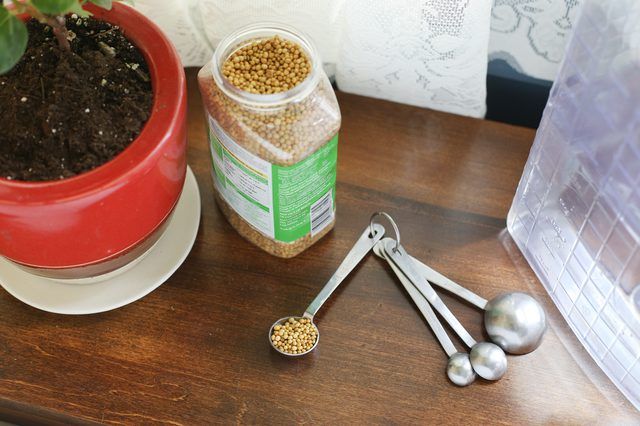Bulbs
Flower Basics
Flower Beds & Specialty Gardens
Flower Garden
Garden Furniture
Garden Gnomes
Garden Seeds
Garden Sheds
Garden Statues
Garden Tools & Supplies
Gardening Basics
Green & Organic
Groundcovers & Vines
Growing Annuals
Growing Basil
Growing Beans
Growing Berries
Growing Blueberries
Growing Cactus
Growing Corn
Growing Cotton
Growing Edibles
Growing Flowers
Growing Garlic
Growing Grapes
Growing Grass
Growing Herbs
Growing Jasmine
Growing Mint
Growing Mushrooms
Orchids
Growing Peanuts
Growing Perennials
Growing Plants
Growing Rosemary
Growing Roses
Growing Strawberries
Growing Sunflowers
Growing Thyme
Growing Tomatoes
Growing Tulips
Growing Vegetables
Herb Basics
Herb Garden
Indoor Growing
Landscaping Basics
Landscaping Patios
Landscaping Plants
Landscaping Shrubs
Landscaping Trees
Landscaping Walks & Pathways
Lawn Basics
Lawn Maintenance
Lawn Mowers
Lawn Ornaments
Lawn Planting
Lawn Tools
Outdoor Growing
Overall Landscape Planning
Pests, Weeds & Problems
Plant Basics
Rock Garden
Rose Garden
Shrubs
Soil
Specialty Gardens
Trees
Vegetable Garden
Yard Maintenance
How to Winter a Mandevilla Plant
How to Winter a Mandevilla Plant. Tropical flowering vines, mandevillas (Mandevilla spp.), formerly called *Diplandenia*, come from Brazil and grow year-round in U.S. Department of Agriculture plant hardiness zones 10 through 11. Mandevillas are good for growing outdoors on posts, trellises and lattices and as living screens in frost-free climates....
Tropical flowering vines, mandevillas (Mandevilla spp.), formerly called Diplandenia, come from Brazil and grow year-round in U.S. Department of Agriculture plant hardiness zones 10 through 11. Mandevillas are good for growing outdoors on posts, trellises and lattices and as living screens in frost-free climates. In colder climates you have to bring them indoors and grow them as houseplants or store them in a dormant state for winter.
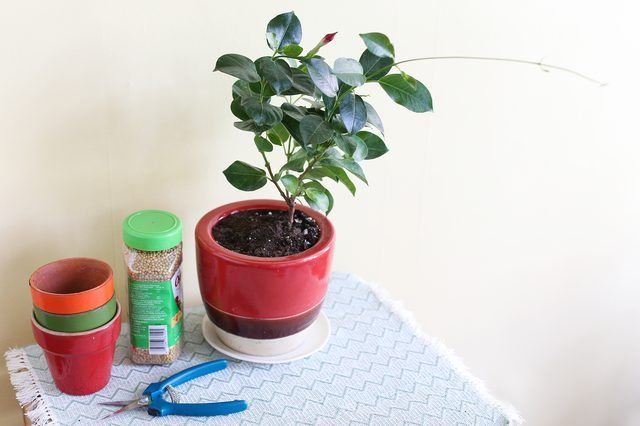
You'll most likely find cultivars of pink allemanda (Mandevilla splendens) at a garden center, although you may also find white mandevilla, also called Brazilian jasmine (Mandevilla sanderei, USDA 10 through 11), for sale. Both species have the same growing requirements.
If you grow them outdoors mandevillas have sparse foliage but produce copious blossoms in two flushes, one in early summer and a second in early fall, plus they offer the charm of flowering occasionally throughout the winter. In USDA zones 10 through 11 mandavillas grow more slowly in the winter, but they need no special winter care.
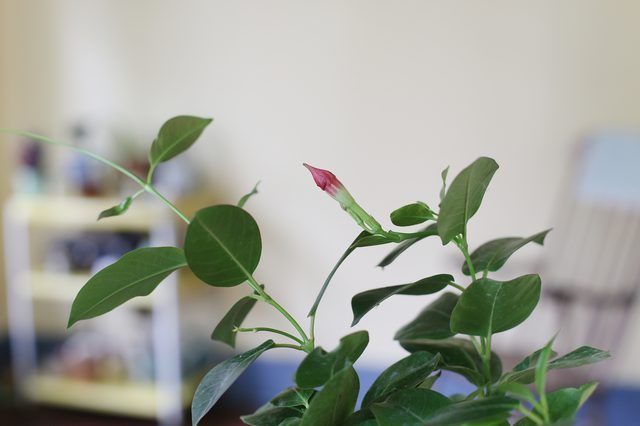
When the fall temperature threatens to drop below 45 to 50 degrees Fahrenheit, blast insects off a mandevilla with a forceful spray of water and bring it inside for the winter. If you move a mandevilla inside, the aim is to keep it alive -- you won't get flowers. Put it outside again when the temperature is dependably above 50 F.
To grow a mandevilla as a winter houseplant select a pot with a drainage hole and containing 1 part compost, 1 part sand and 1 part peat moss. Place the potted mandevilla in bright, indirect sunlight or sunlight filtered by a curtain with daytime temperatures above 70 F and nighttime temperatures of 60 to 65 F.
It's easy to overwater a plant in a pot, so don't water the mandevilla until the potting mix begins to dry out. Fertilize every other week with a solution of 1 1/2 teaspoons of water-soluble 20-20-20 fertilizer mixed in 1 gallon of water.
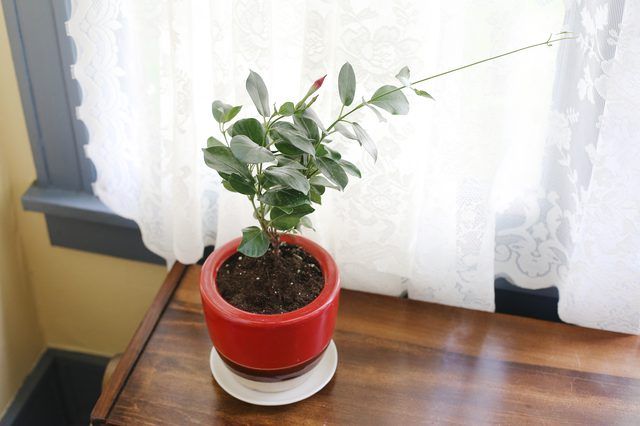
Before moving potted mandevilla back outside, soak a sharp knife or pruning shears for five minutes in a solution of 1 part household bleach to 3 parts of water and allow the tool to air dry. Use the sterilized knife or pruning shears to cut the mandevilla vine back to 1 or 2 inches of the previous year’s woody growth.
When the weather warms to temperatures above 50 F, put your mandevilla outdoors in a shady area for a few hours, giving it more time outside each day, and giving it more sun each time. Increase the time outdoors each day for 10 days to help acclimate it to the conditions outside. The leaves may be pale at first because the plant has been indoors, but once it gets growing again its leaves will green up. Cut off dead leaf tips with sterilized pruning shears.
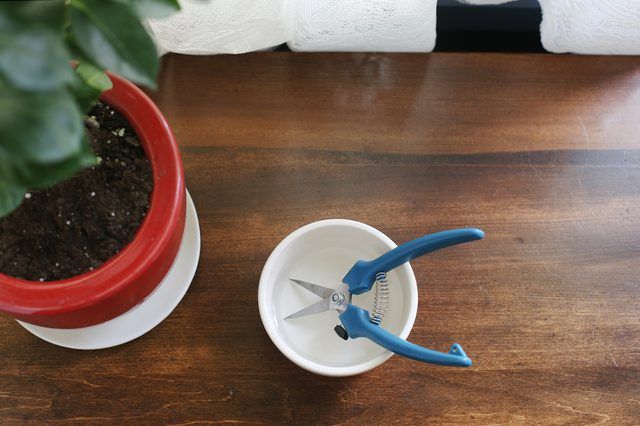
If you don't want to go through the extra chores of caring for a potted mandevilla that will not flower anyway, consider storing it indoors for the winter in a dormant state. To store a dormant mandevilla, leave it outdoors until the nighttime temperatures drop to around 45 F. Use a sterilized knife or pruning shears to cut the plant back to 12 inches and move it into a basement or garage that remains above 32 F. Don't fertilize it and only water it enough to keep the soil from drying out completely.
When it emerges from dormancy and begins growing again in spring, fertilize it with 1 1/2 teaspoons of soluble 20-20-20 fertilizer in 1 gallon of water, moisten the potting mix, and put it in bright light.
When the weather warms above 50 F, return it outside gradually and treat as you would mandevilla that spent the winter as a houseplant.
